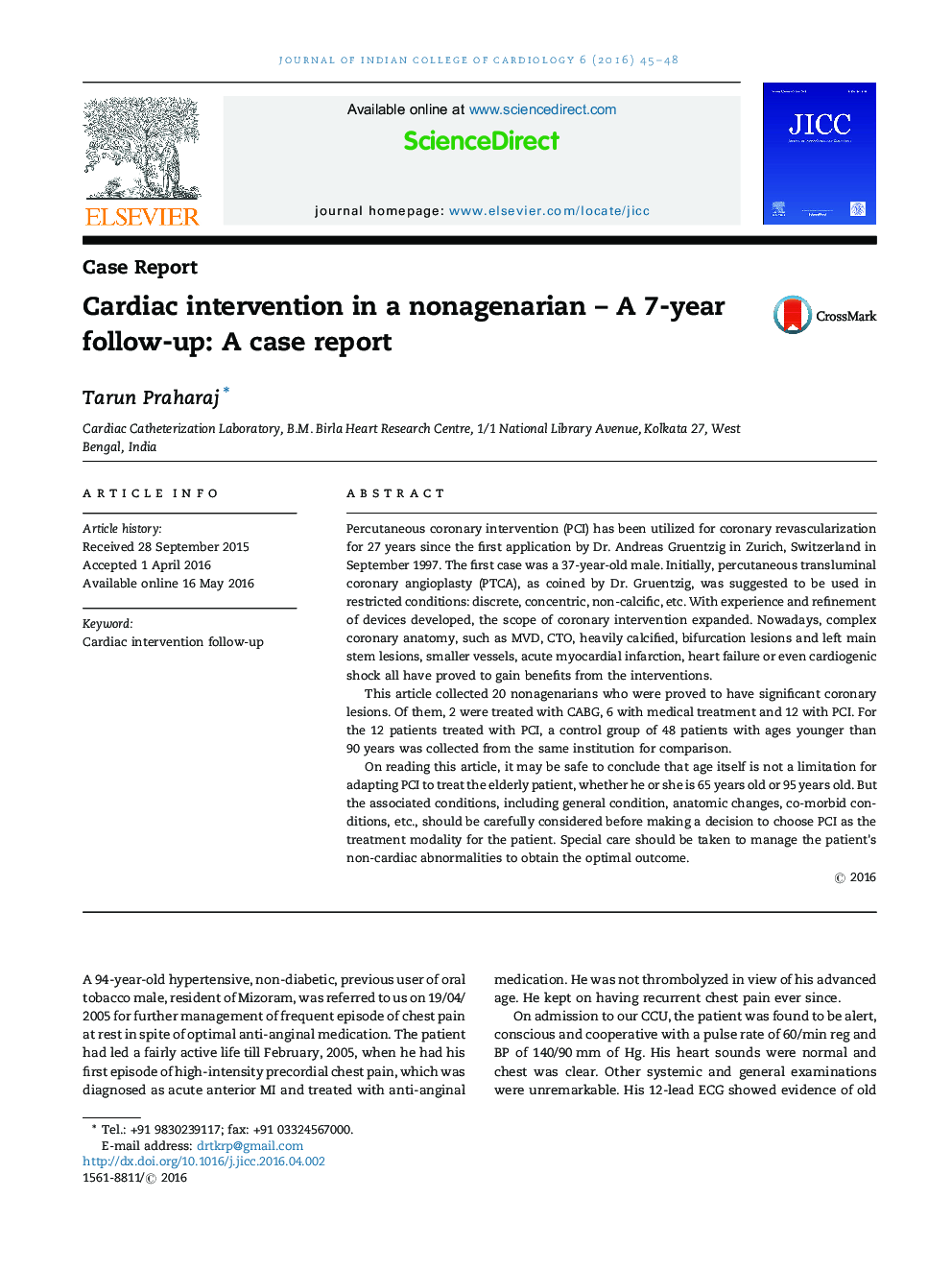| Article ID | Journal | Published Year | Pages | File Type |
|---|---|---|---|---|
| 2973677 | Journal of Indian College of Cardiology | 2016 | 4 Pages |
Percutaneous coronary intervention (PCI) has been utilized for coronary revascularization for 27 years since the first application by Dr. Andreas Gruentzig in Zurich, Switzerland in September 1997. The first case was a 37-year-old male. Initially, percutaneous transluminal coronary angioplasty (PTCA), as coined by Dr. Gruentzig, was suggested to be used in restricted conditions: discrete, concentric, non-calcific, etc. With experience and refinement of devices developed, the scope of coronary intervention expanded. Nowadays, complex coronary anatomy, such as MVD, CTO, heavily calcified, bifurcation lesions and left main stem lesions, smaller vessels, acute myocardial infarction, heart failure or even cardiogenic shock all have proved to gain benefits from the interventions.This article collected 20 nonagenarians who were proved to have significant coronary lesions. Of them, 2 were treated with CABG, 6 with medical treatment and 12 with PCI. For the 12 patients treated with PCI, a control group of 48 patients with ages younger than 90 years was collected from the same institution for comparison.On reading this article, it may be safe to conclude that age itself is not a limitation for adapting PCI to treat the elderly patient, whether he or she is 65 years old or 95 years old. But the associated conditions, including general condition, anatomic changes, co-morbid conditions, etc., should be carefully considered before making a decision to choose PCI as the treatment modality for the patient. Special care should be taken to manage the patient's non-cardiac abnormalities to obtain the optimal outcome.
